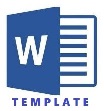e-ISSN (Elektronik)
Author Guidelines
Papers are invited from anywhere in the world, and so authors are asked to ensure that sufficient context is provided for all readers to appreciate their contribution.
Types of papers
The types of papers that may be considered for inclusion are:
1) Original research;
2) Review papers, which include meta-analysis and systematic review
How to submit your manuscript
All manuscripts should be submitted online at here
General Guidelines
- Use the Journal of Islamic Studies and Society (JISS) guide as a template.
- Ensure that each new paragraph is indicated. Present tables and figure legends on separate pages at the end of the manuscript.
- Number all pages consecutively. Manuscripts should also be spellchecked by the facility available in most good word-processing packages.
- Extensive use of italics and emboldening within the text should be avoided.
- Papers should be clear, precise, and logical and should not normally exceed 4,000 words.
- The Abstract should be informative and completely self-explanatory, provide a clear statement of the problem, the proposed approach or solution, and point out major findings and conclusions. The Abstract should be 150 to 250 words in length. The abstract should be written in the past tense.
- The keyword list provides the opportunity to add keywords, used by the indexing and abstracting services, in addition to those already present in the title. Judicious use of keywords may increase the ease with which interested parties can locate our article.
- The Introduction should provide a clear background, a clear statement of the problem, the relevant literature on the subject, the proposed approach or solution, and the new value of research which it is innovation. It should be understandable to colleagues from a broad range of scientific disciplines.
- Explaining research chronological, including research design and research procedure. The description of the course of research should be supported references, so the explanation can be accepted scientifically.
- Tables and Figures are presented center.
- In the results and discussion section should be explained the results and at the same time is given the comprehensive discussion.
- A good conclusion should provide a statement that what is expected, as stated in the "Introduction" section can ultimately result in the "Results and Discussion" section, so there is compatibility. Moreover, it can also be added the prospect of the development of research results and application prospects of further studies into the next (based on the results and discussion).
- References should be cited in the text. Only references cited in the text should be listed at the end of the paper.
One author should be designated as the corresponding author and provide the following information:
- E-mail address
- Full postal address
- Telephone and fax numbers
Please note that any papers which fail to meet our requirements will be returned to the author for amendment. Only papers which are submitted in the correct style will be considered by the Editors.
Submission Preparation Checklist
As part of the submission process, authors are required to check off their submission's compliance with all of the following items, and submissions may be returned to authors who do not adhere to these guidelines.
-
- The submission has not been previously published, nor is it before another journal for consideration (or an explanation has been provided in Comments to the Editor).
- The submission file is in Open Office, Microsoft Word, RTF, or WordPerfect document file format.
- Where available, URLs for the references have been provided.
- The text is single-spaced; uses an 11-point font; employs italics, rather than underlining (except with URL addresses); and all illustrations, figures, and tables are placed within the text at the appropriate points, rather than at the end.
- The text adheres to the stylistic and bibliographic requirements outlined in the Author Guidelines, which are found in About the Journal.















